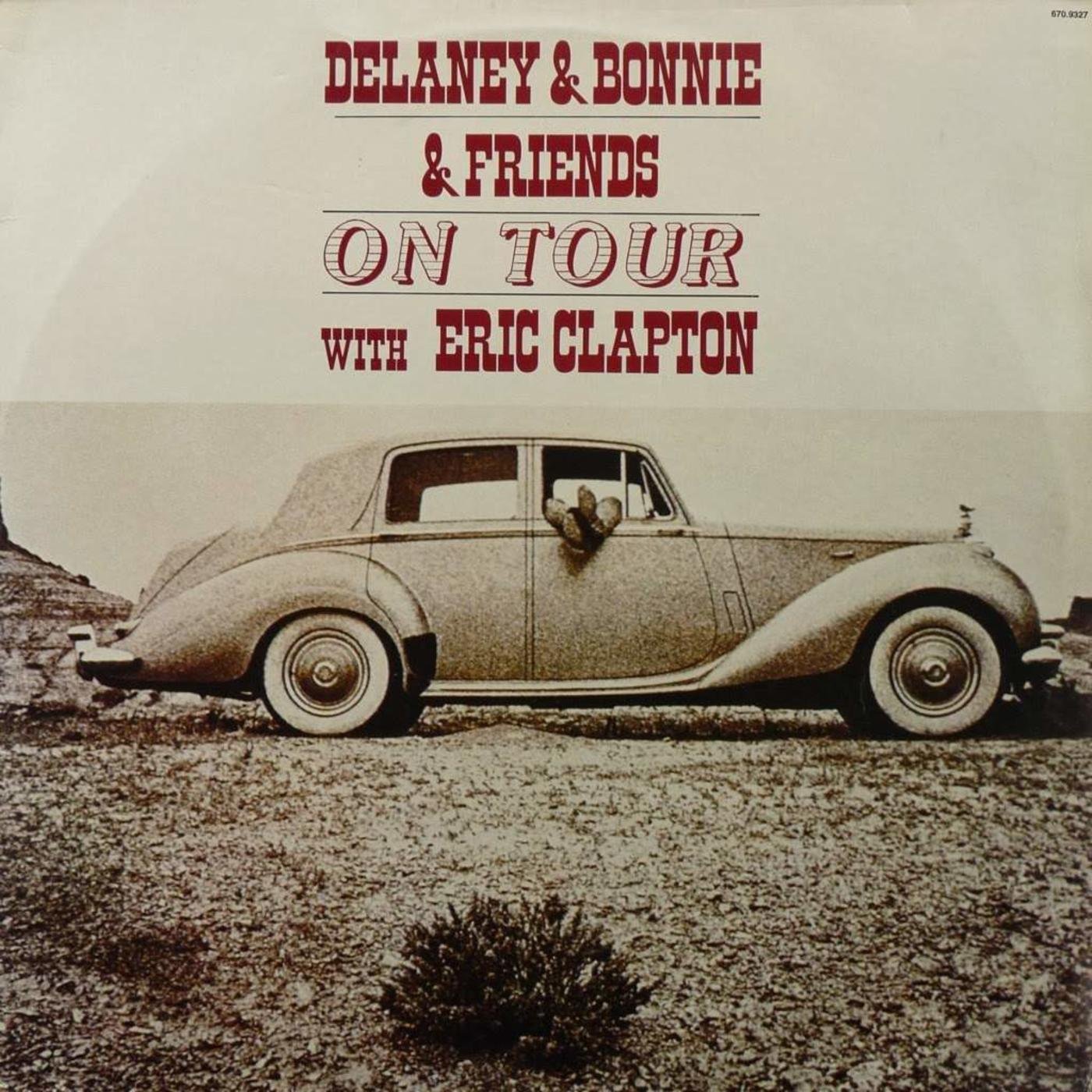
In Part 2 of Rock Chronicles, if you recall Delaney & Bonnie completed its recording session for Elektra Records, only for the record label to discover that Delaney tried to cut a deal with Apple Records under the auspices of George Harrison of the Beatles.
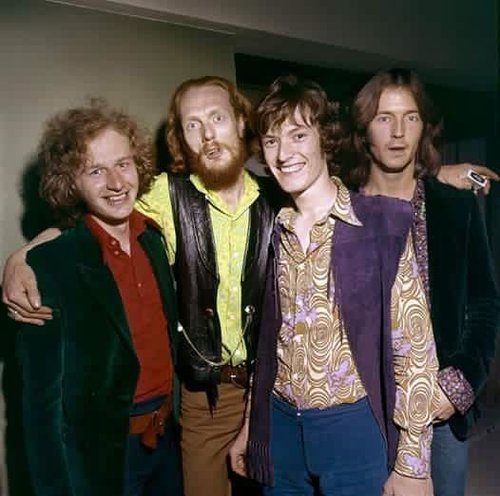
The band, according to member Bobby Whitlock’s autobiography, had already gotten kicked off the Elektra label when it was touring, due to Delaney’s drunken antics with label owner Jac Holzman. Delaney & Bonnie manager Alan Pariser, who was close friends with Harrison, arranged for the group to be the opening act for Blind Faith, aka the new band of guitar god Eric Clapton.
Clapton had already heard of Delaney & Bonnie when Harrison returned home from America and raved about the group to everyone in London—well before its album Accept No Substitute was officially released. Clapton’s supergroup comprised members of three different bands: Traffic (Jim Capaldi and keyboardist Steve Winwood), Family (Ric Grech), and Cream (Ginger Baker and himself). When Delaney & Bonnie were asked to open for Blind Faith, the band jumped at the chance.
Now travelling as Delaney & Bonnie & Friends (DBF), the group consisted of Jim Keltner and Jim Gordon on drums, Bobby Keys and Jim Price on horns, Carl Radle on bass, Tex Johnson on congas, Dave Mason on guitar, Rita Coolidge singing and playing tambourine, Bonnie and Delaney themselves on vocals and guitar, along with some input from Clapton. “That was one hell of a band,” Bobby Whitlock wrote, “especially when Eric started sitting in with us.” Meanwhile, in Blind Faith was “Baker pounding away on his massive double kit and looking completely pissed off,” added Whitlock. “The first show we played was in New York’s famed Madison Square Garden on July 12, 1969.”
Clapton began spending more and more time with DBF and less time with Blind Faith—he was captivated by the passion and energy that Delaney’s band exhibited that were unlike how his own band performed. Whitlock said that even though they were the opening act for the supergroup, they were blowing Blind Faith off the stage every night, and everyone noticed it. Clapton’s relationship with Delaney was further cemented when the latter asked Clapton to come back to the States and attend the recording session for their first single for their new label, Atlantic Records. According to Whitlock, “Comin’ Home” was a song Delaney had written while on the bus on the Blind Faith tour.
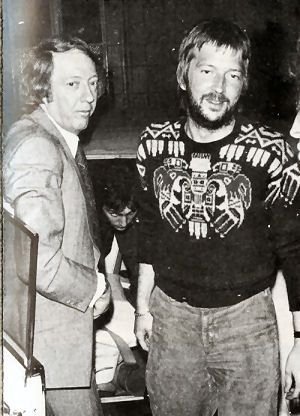
Deciding he wanted no more of being in Blind Faith, Clapton abruptly quit the band. This decision was followed by his asking Delaney if he and his band would serve as his backing group for his first solo album. In response, Pariser and Clapton manager Robert Stigwood arranged for the whole band to fly to England in November of 1969 for an extended stay. While there, they lived in Clapton’s personal quarters. “Eric had generously invited all of us to stay at his country home, Hurtwood Edge, deep in the Surry countryside,” Whitlock remembered.
Clapton had enough clout that he could do anything he wanted, remembered Rita Coolidge in her autobiography. “He paid for our plane tickets and bought amps for the guys—he even bought Bonnie’s dress for a gig at Albert Hall.” Clapton was more than happy to foot the bill for a band he’d basically hijacked en masse to suit his own purposes. “I set up a rehearsal room on the top floor at Hurtwood,” wrote Coolidge. “And the band came to live there for a few weeks prior to touring, first in Germany, as a warmup, then in England and Scandinavia.”
Clapton’s manager, Robert Stigwood, had hired a booking agency called Lippmann and Rau to book the tour. One of their first shows was a live taping of a BBC program called Price of Fame or Fame at Any Price. The band adjusted their format by playing an all-acoustic set with Whitlock, Delaney, Bonnie, Mason, and Clapton, using acoustic guitars and Steel Dobro. This was followed by the Beat Club television show in Bremen, Germany. Soon after, the band was rolling through Europe on a tour that would last two months.
It wasn’t always pleasant—during the German leg of the tour, promotional posters were printed that advertised “Delaney & Bonnie & Friends, featuring Eric Clapton.” In Germany’s Cologne region, the audiences were under the assumption that it was Clapton’s group and he was the leader—they chanted his name repeatedly and heckled the band when his Cream and Blind Faith tunes weren’t played. “The next thing we knew, the audience was booing and ripping the seats out of the floor and we were being hustled off the stage,” Coolidge recalled.
On December 5, at their first gig at London’s Royal Albert Hall, Clapton, along with Delaney, Whitlock, drummer Jim Gordon and bassist Carl Radle, came on stage to warm up the audience with a few tunes before the show. “Looking back, that was the first appearance of Derek and the Dominos,” Whitlock noted. “Only we did not know that.”

While Harrison and his wife Patti attended the Royal Albert Hall concert, Harrison imagined how much fun it would be to be up there on stage, without the stress of being a member of the Fab Four. Just like Clapton, he wanted a piece of that pie. He went backstage and told Delaney how much he loved watching the band playing with what seemed like such unbridled freedom and reckless abandon. Harrison biographer, Marc Shapiro, recounted Delaney describing his exchange with Harrison: “He asked, ‘Can I play with you?’ I said, ‘Sure, of course you can play!’ He said, ‘Well, can you pick me up at my house?’ I said, ‘Sure, but does anybody know how to get there?’” Luckily, bassist Klaus Voormann and keyboard/organist Billy Preston did.
The following day, the band played in Liverpool where Harrison confessed to a journalist, “I’d like to do the Beatles thing, but more like Delaney & Bonnie with us augmented with a few more singers and a few trumpets, saxes, organ and all that.” George started out a bit shy at first on stage, hanging in the background and only stepping forward to play limited solos, but as the gigs went by, he felt more at home and, with a bit of cajoling from the band, assumed a more prominent role. After performing in Copenhagen for the Scandinavian leg of the tour, the band joined John Lennon and Yoko Ono’s Plastic Ono Band on December 15 at London’s Lyceum to form a rare, “one-time-only” supergroup. They played for a half hour.
In between shows, they worked on songs for Clapton’s future solo album. According to Whitlock, they got five or six tunes recorded at London’s Olympic Studios over the next few days. Gigs were followed by wild partying, sometimes with George leading the way. Shapiro’s book describes one night where George tore off Delaney’s green velvet pants, leaving Delaney running down the streets naked, chasing the tour bus! Meanwhile, on December 7, 1969, Delaney & Bonnie & Friends performed at Fairfield Halls in Croydon, where the bulk of the forthcoming live album was captured.
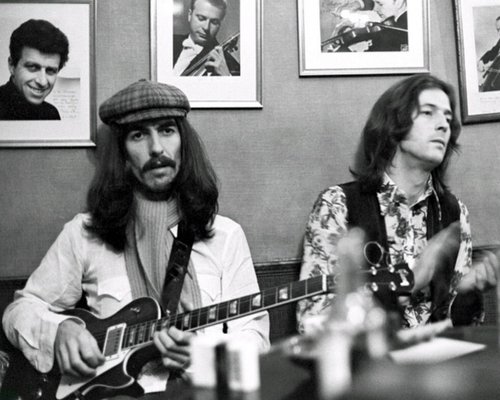
Released on ATCO Records in March 1970, DBF’s On Tour With Eric Clapton was a snapshot of the band’s whirlwind tour while in and around England. Eight tunes, including a medley of Little Richard songs, were culled from the massive gathering of live tapes collected during numerous shows. When the band had finally gathered in the studio for a listening session, they realized the results were less than superior, and much was needed to resurrect the music. “It was a real eye-opener,” Whitlock said in his book. “Because they sounded terrible, nothing like the way we remembered the shows at all.” Delaney’s vocals and guitar parts were both out of tune, and thus scrapped as a result. Lengthy overdubs were needed to spruce up the overall sound—recording engineers Andy and Glyn Johns were flown in to oversee the project, while Jimmy Miller, producer of several Rolling Stone albums, was hired to produce the session.
When the album was released, George Harrison was only listed on the back cover as “Mysterioso”, as his contractual agreement with the Beatles prevented him from being acknowledged by his real name. In what seemed almost an afterthought, his role woefully downplayed, Harrison was briefly thanked on the cover alongside Atlantic label president Ahmet Ertegun. The grainy black-and-white front cover shows a Rolls Royce Silver Dawn with the driver’s feet dangling out the passenger side (Whitlock informs us that the automobile belonged to manager Albert Grossman, while the pair of feet belonged to photographer Barry Feinstein). The back cover of the album, taken in January 1970, depicts Ten tired band members looking somewhat disheveled and stranded, as they walked toward Feinstein holding the camera in the Joshua Tree desert. The album reached number 29 on the U.S. Billboard charts and 39 in the UK, eventually achieving ‘Gold’ status.
Meanwhile, only one track from the Olympic studio sessions for Clapton’s solo album was salvageable for his album. After Christmas, Clapton flew to L.A. to finish the project with Delaney who was writing new songs for the album, and they recorded the tracks at Village Recorders. Clapton recorded J.J. Cale’s tune, “After Midnight,” while “Blues Power” was penned by Leon Russell, and “Let It Rain” was co-written by Clapton and Delaney.
In an incredible display of “six degrees of separation,” the March release of the live album coincided with the end of the short tour Delaney & Bonnie took with Clapton to support his new solo album. This period, in turn, also marked the start of Cocker’s Mad Dogs and Englishmen tour, as almost the entire DBF band, sick of the constant bickering between Delaney and Bonnie, immediately defected when the Clapton tour was over, only to join Joe Cocker and Leon Russell’s new adventure. The timing also intersected perfectly with the birth of Russell’s solo career with his self-titled album on Denny Cordell’s newly minted Shelter Records.
Change was in the air. These overlapping events indicated a huge surge in momentum; things were leaning forward, and the musical dam was about to burst. And when it finally broke, Russell’s burgeoning career as the next superstar was launched, and he never looked back. In other news, Coolidge—the Delta Lady—forged a sparkling solo career when the Mad Dog tour was over, while Clapton would ultimately emerge with not only a new album, but an entirely new band.
But wait, what about the biggest name of the bunch—George Harrison? As it turns out, the same good fortune could be said to describe his ensuing musical path. He’d left the Beatles and found an entirely new band to record his next solo album, thereby marking his official freedom and release from the Fab Four. All Things Must Pass became his new battle cry, while Clapton literally courted Layla with Derek and the Dominos. These stories and more coming soon!
Books on my shelf:
- Becoming Elektra: The True Story of Jac Holzman’s Visionary Record Label by Mick Haughton. Jawbone Books [2nd Ed.](2016).
- All Things Must Pass: The Life of George Harrison by Mark Shapiro. Virgin Books (2002).
- Leon Russell: In His Own Words (With A Little Help From His Friends) by Leon Russell. Steve Todoroff Archives (2019).
- Me by Elton John. Henry Holt & Co. (2019).
- Joe Cocker: The Authorized Biography by J.P. Bean. Virgin Books (1990).
- Delta Lady: A Memoir by Rita Coolidge. Harper Collins (2016).
- Time Is Tight: My Life, Note By Note by Booker T. Jones. Little, Brown (2019).
- Bobby Whitlock: A Rock ‘n’ Roll Autobiography by Bobby Whitlock. McFarland & Co. (2011).
- Clapton: The Autobiography by Eric Clapton. Broadway Books (2007).
- Miss O’Dell by Chris O’Dell. Touchstone Books (2009).
- Wonderful Tonite: George Harrison, Eric Clapton and Me by Patti Boyd. Harmony Books (2007).
- You Never Give Me Your Money: The Beatles After The Breakup by Peter Doggett. Harper Collins (2009).
- Rhythm and the Blues by Jerry Wexler and David Ritz. Alfred A. Knopf (1983).
- Follow The Music: The Life and High Times of Elektra Records in the Great Years of American Pop Culture by Jac Holzman and Gavan Davis. First Media Books (1998).
- Elton John by Phillip Norman. Harmony Books (1991).
- Tin Pan Alley: The Rise of Elton John. Keith Hayward. Soundcheck Books (2013).
- His Song: The Musical Journey of Elton John. Elisabeth J. Rosenthal. Billboard Books (2004).
- Elton John: The Biography by David Buckley. Chicago Review Press (2009).

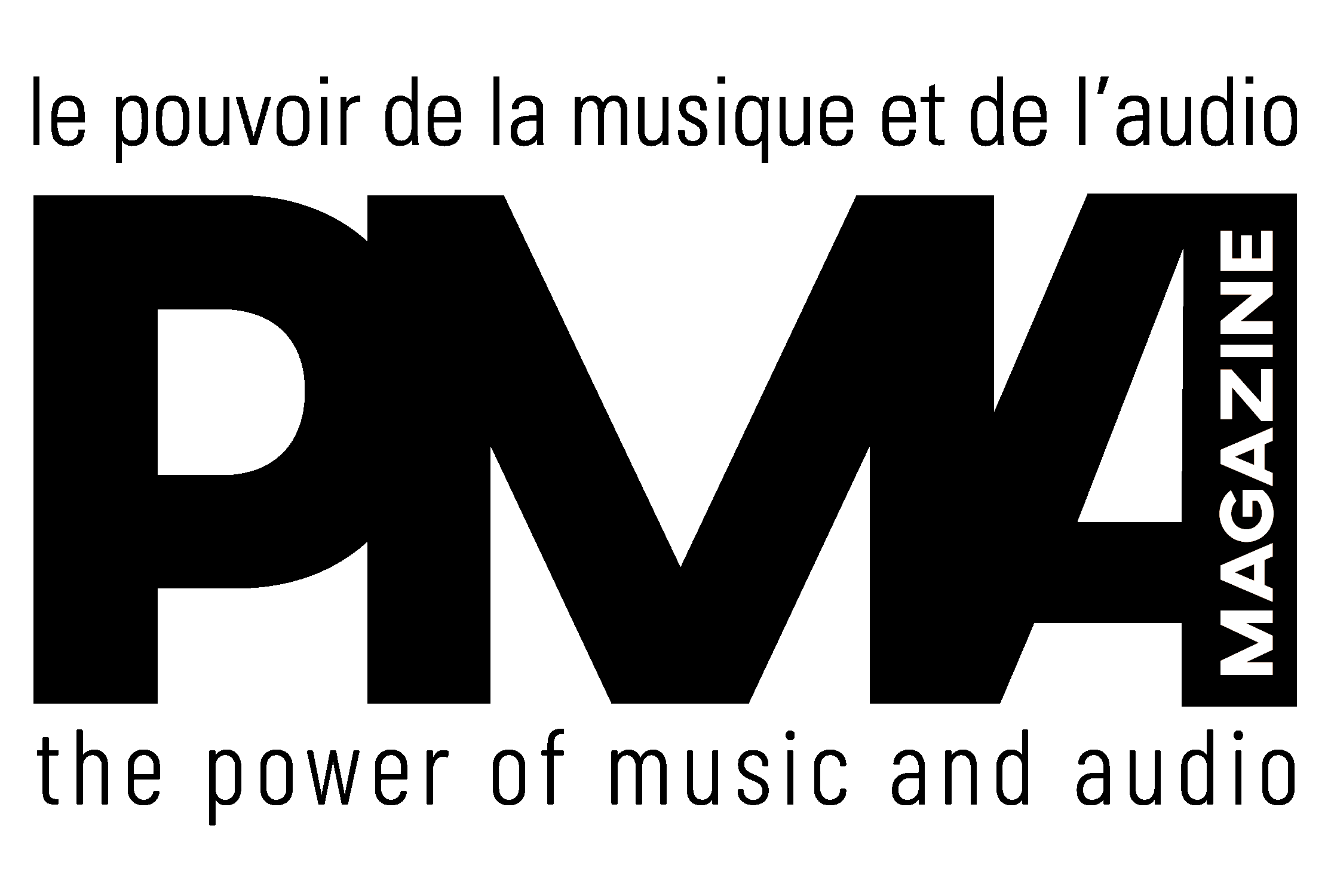





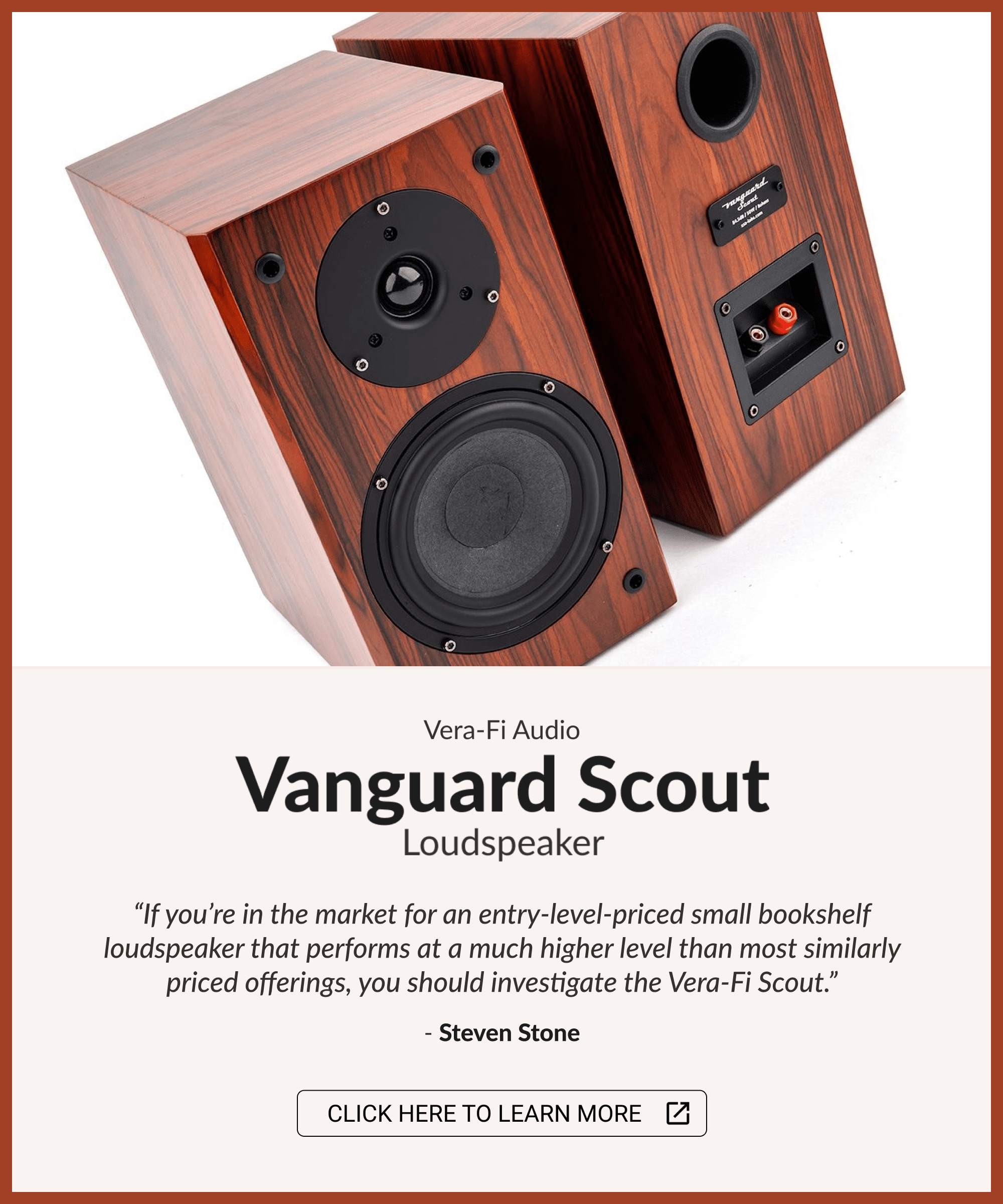









Leave a Reply